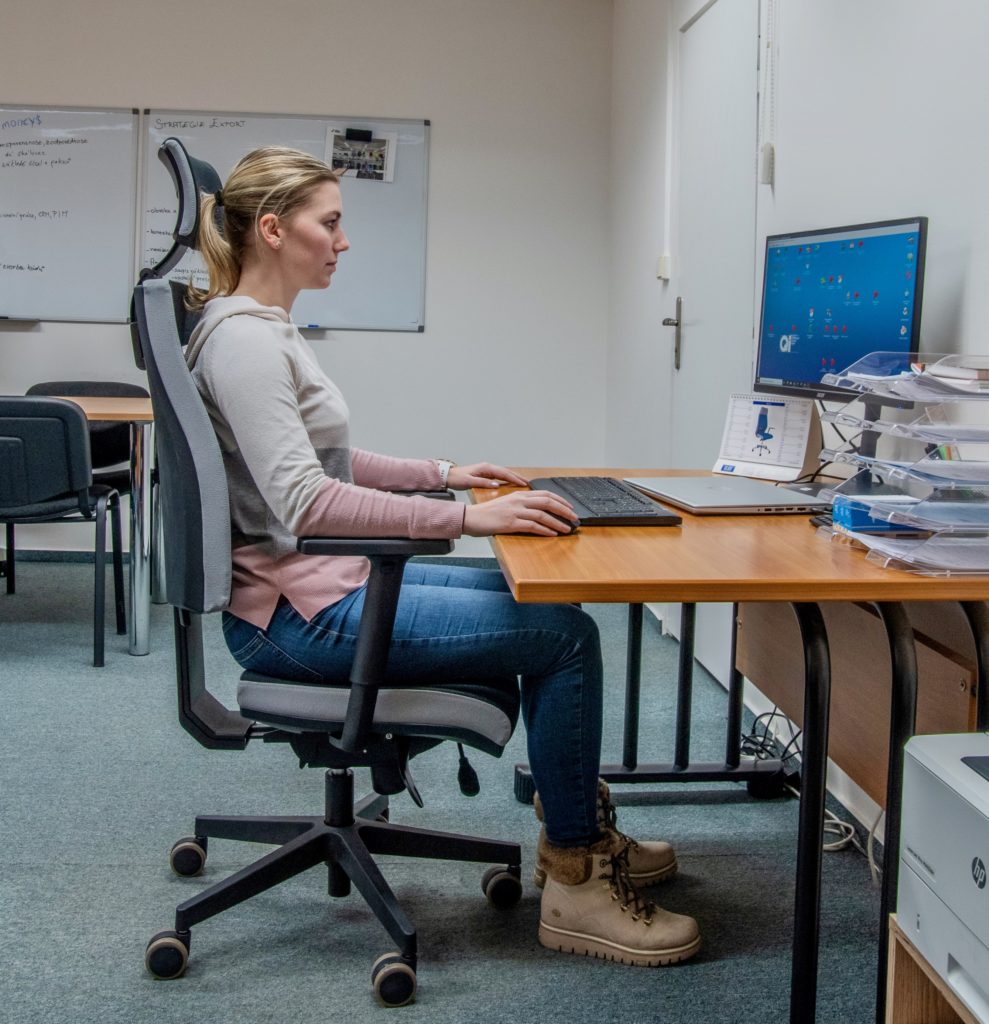When we develop ALBA ergonomic chairs and armchairs, we keep in mind that you should perform at your best while sitting on them. To concentrate as much as possible, to manage your work carefully, not to make mistakes, in short, to be truly productive and to use your potential to the full. But alongside that, we also want you to sit properly, relaxed and healthy. Because that’s the only way you can sit for most of your working hours without affecting your health.
ALBA chairs therefore provide excellent support, promote ergonomic posture and minimise discomfort when sitting for long periods of time. They help to prevent both pain and potential negative effects of improper sitting posture.

Sitting ergonomy is a real science, and at first impression, sitting in an ergonomic chair may not seem very comfortable – especially if you haven’t sat properly or have sat in an unsuitable chair until now. In fact, a good quality properly adjusted ergonomic chair, will guide you to the correct sitting position and enable you to sit in such a way that the negative effects of prolonged sitting are eliminated as much as possible.
However, even the best quality ergonomic chair will not guarantee perfect sitting comfort if you yourself are not sitting correctly at your desk.
A very basic condition of a good ergonomic chair is that it is adjustable, so that it allows everyone who sits on it to sit properly. Because a chair that is comfortable for one person may be completely unsuitable for another.
However, even if the chair is intented for one person only, the possibility of individual adjustment is important – sitting positions change constantly according to the activity and a good chair must provide the right support in every position and every movement.
In practice, it is important that the controls on the chair are intuitive and easy to use. It should not take too much effort to adjust the settings. It is advantageous if most of the adjustments can be made from a sitting position, and also if the controls are placed consistently on the chairs so that different employees can use them regardless of which chair they are sitting on – which is desirable, for example, in multi-shift operations or call centres.